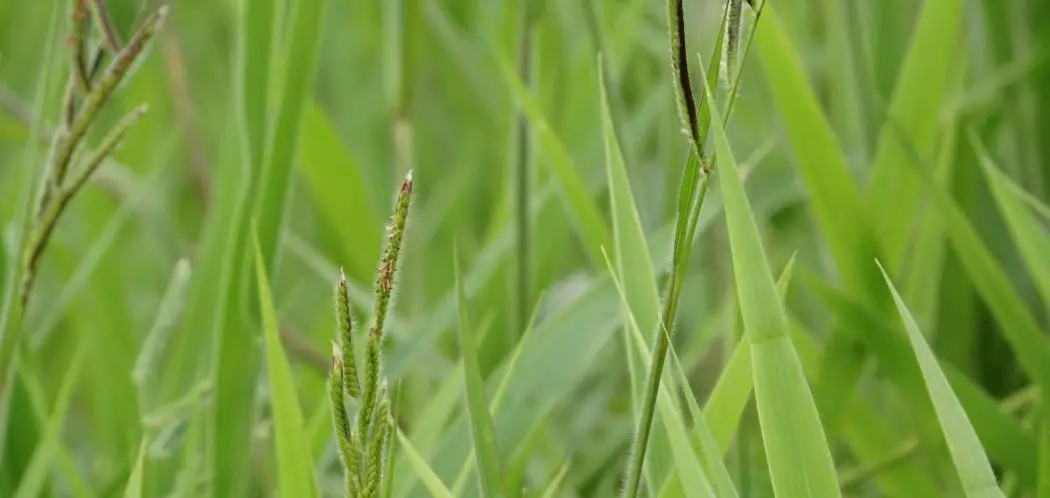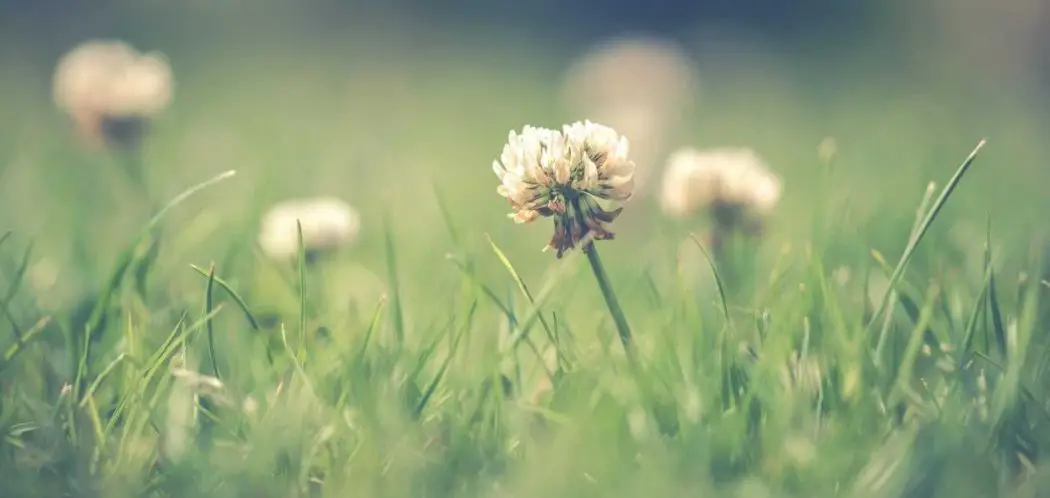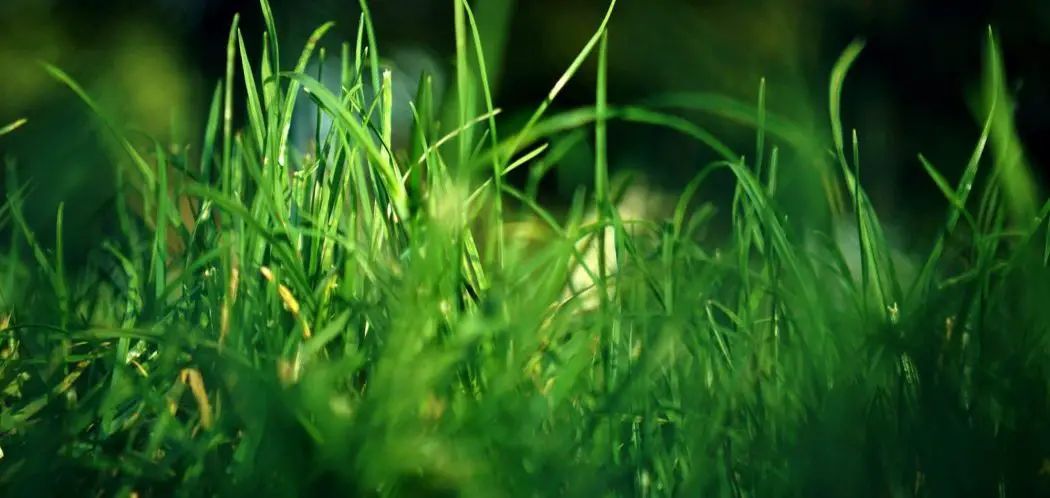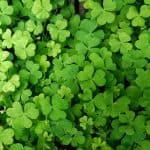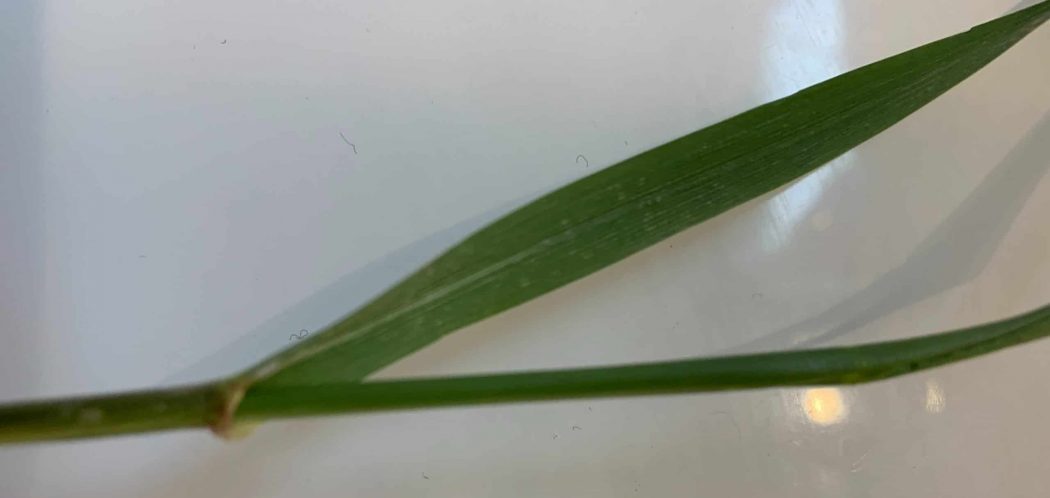Dallisgrass is a common perennial grassy weed that is very hard to kill. It’s originally from South America and it’s a lot more likely to be a problem for you southern folk with warm season grass types like bermuda, zoysia or centipede. It can be very unsightly in your yard since is destroys the uniformity of any fine turf.
Dallisgrass can absolutely take over your yard and its one of the most difficult weeds to control. It can even be toxic to some animals too so you’ll want to identify it correctly so that you can take the necessary steps to get rid of it.
In this article, I’ll show you what Dallisgrass looks like and then I’ll give some ideas on how to get it out of your lawn.
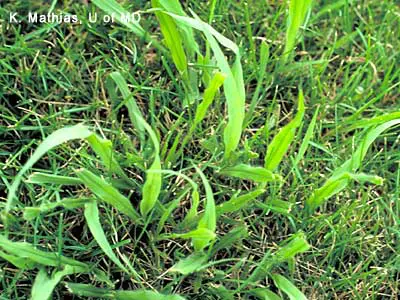
What Does Dallisgrass Look Like?
Dallisgrass looks similar to many different grasses although it often has a lighter shade of green and it’s much less attractive in a home lawn. If you’re seeing a different colored, coarse grass growing in a circular clump that has long and thick stems, you’re likely looking at Dallisgrass.
Dallisgrass can often end up looking separated…
Often a bunch of Dallisgrass will grows so big that it strangles the center of itself which creates some space. This is why you’ll often see your own turf grass in the center of a Dallisgrass clump.
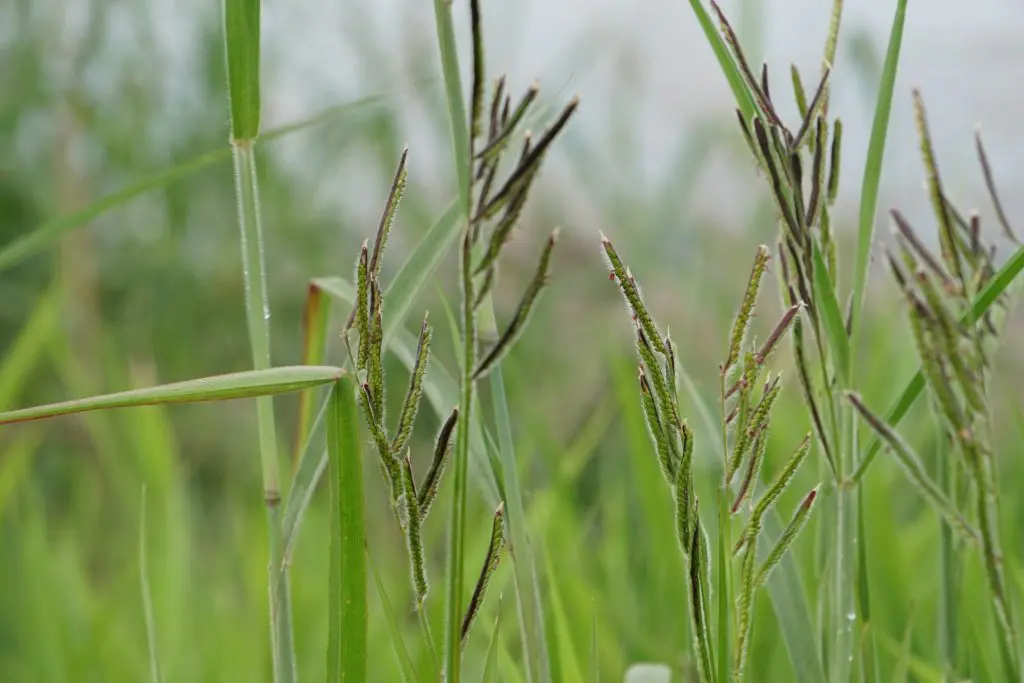
5 Things to Look for in Identifying Dallisgrass
- It looks like grass and grows in clumps
- Long stems
- Dallisgrass produces a ton of seeds
- Prominent mid vein in the leaf
- Broad, flat blades that spread out
Other Features of Dallisgrass
- Dallisgrass has no auricles.
- Dallisgrass reproduces rhizomes. Rhizomes are the stems which usually grow horizontally under the soil.
- It has a split sheath and a continuous collar.
Why Is It Important to Identify Dallisgrass Correctly?
Other than the fact that it’s nice to know what weeds you have growing in your yard, correct identification is essential to eliminate any weed you may have.
The different weeds you may find in your lawn can be classified into three categories. These are…
- Annuals
- Bi-annuals
- Perennials
It’s important to correctly categorize your weeds because some of the selective herbicide products you might see at the store are only going to work on the annual and bi-annual weeds and NOT the perennials.
If you apply the wrong product you, it won’t take care of the problem and it could end up hurting your turfgrass.
When Are You Likely to See Dallisgrass?
Dallisgrass tends causes problems largely in warm season areas and in the transition zone.
Dallisgrass is much better than all turf types at tolerating heat and drought conditions which can help it spread out and really take over in your yard.
If your turf becomes thin for any reason, it’s going to be more susceptible to Dallisgrass and it’s going to take a lot of work to get it under control.
How to Get Rid of Dallisgrass?
First of all, it’s worth mentioning that there’s no magic product that’s going to eliminate all of the weeds in your lawn. While some weeds are easier to control than others, it’s important to maintain realistic expectations with weed control. If you’ve got a lawn overcrowded with weeds, the problem isn’t going to be fixed overnight, especially if you have Dallisgrass.
Dallisgrass is one of the most difficult weeds to control; it’s going to survive most treatment applications whether you’re treating it yourself or getting professional help because it has an extremely robust root system.
Since Dallisgrass is a perennial, it doesn’t re-germinate every spring so you can’t control it with pre-emergent. While it will go through a dormancy period in the winter, the same plant is going to keep coming back each year.
Diggigng it up
The first way to get rid of Dallisgrass is to dig it up. You’re going to dig at least five or six inches down into the soil to fully get rid of it.
The problem is that most things you can spray to kill Dallisgrass will also kill your turfgrass too.
It really depends on your turf type…
If you have a Bermuda lawn, there are some selective herbicides you can spray to knock it out without harming the Bermuda grass while in a fescue lawn there’s really nothing that’s going to kill Dallisgrass that won’t also kill Fescue. You’re just going to have to use multiple applications of roundup over the course of a few weeks and hope it doesn’t come back. You’ll want to spray the crown with a pretty high concentration which may leave a brown spot in your lawn. You’ll kill the surrounding grass too but you won’t harm your soil.
If you do have a Bermuda lawn, the best time to spray for Dallisgrass will be when the Bermuda is just beginning to go into dormancy.
Dallisgrass Is Often Misidentified as Crabgrass (and vice versa)
Crabgrass and Dallisgrass regularly get mixed up because they do look quite similar to one another however the treatment is different so it’ important you make a correct distinction between the two. The last thing you want to do is take the wrong course of action on a weed that won’t work.
How to Tell the Difference Between Dallisgrass and Crabgrass
While Dallisgrass has much longer blades than crabgrass, the best way to tell the difference between crabgrass and dallisgrass is to look at the seed heads.
Dallisgrass seed heads look like tiny caterpillars and shoot off horizontally to the stem. Crabgrass seed heads shoot up vertically.
But what if your crabgrass doesn’t have seed heads?
You can also tell the difference between crabgrass and dallisgrass by looking at the root system. You’ll need to pull up some of the plant to look at this.
Dallisgrass roots have tiny ribs, if your weed doesn’t have that these then you know you’ve got a crabgrass plant.
While dallisgrass is a perennial, crabgrass is an annual!
Crabgrass germinates every spring and it dies off in the winter so the best way we can prevent crabgrass is by putting down pre-emergent early in the spring to keep the most of it from ever getting established. I recommend a product like Prodiamine 65 WDG.
Of course, some seeds mays still germinate and in this case, you need to switch over to a post emergent to spray the plant with.
Dallisgrass is there year-round and so pre-emergent products will not work.
The treatment will be different which is why the identification of weeds in your lawn is so important.

